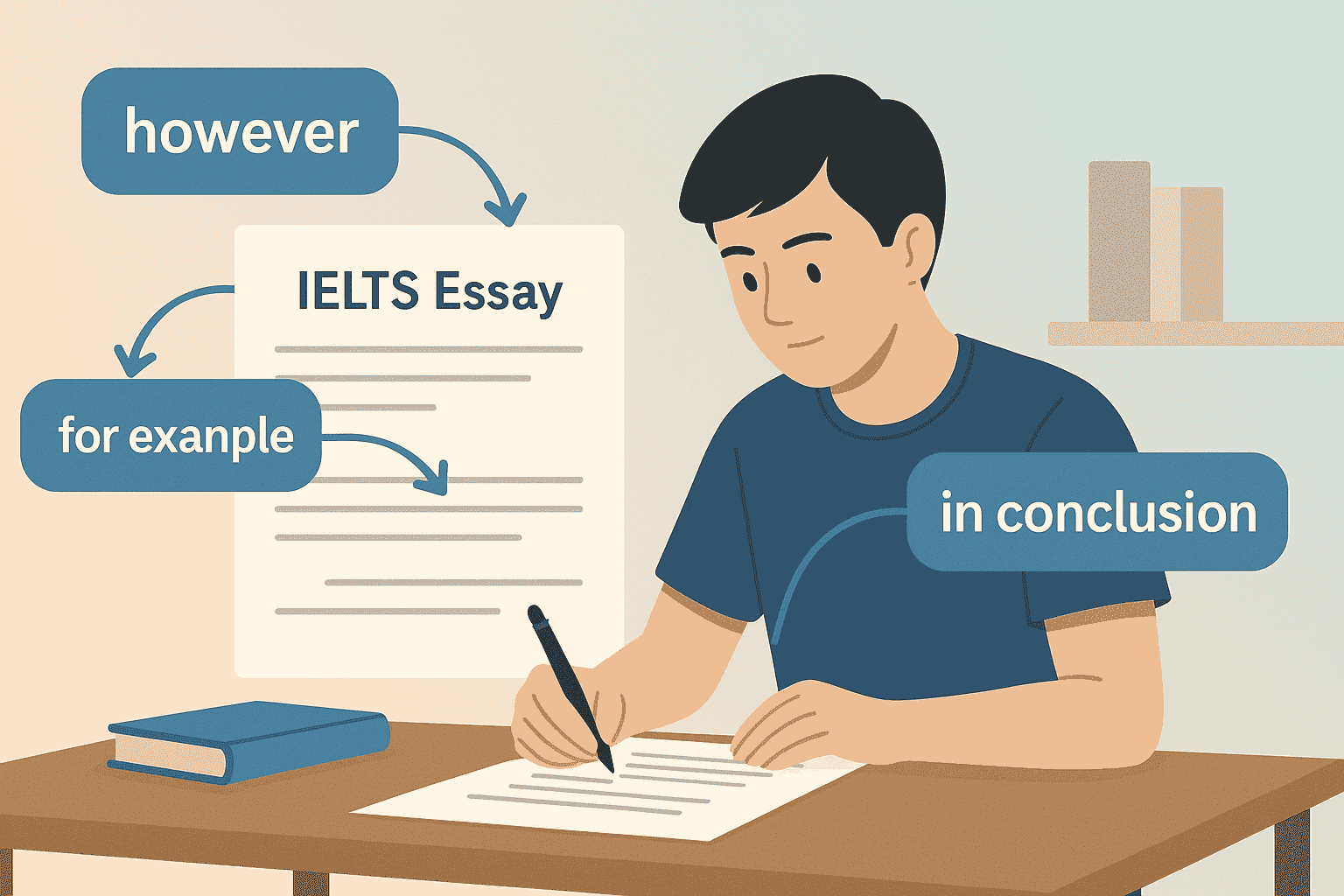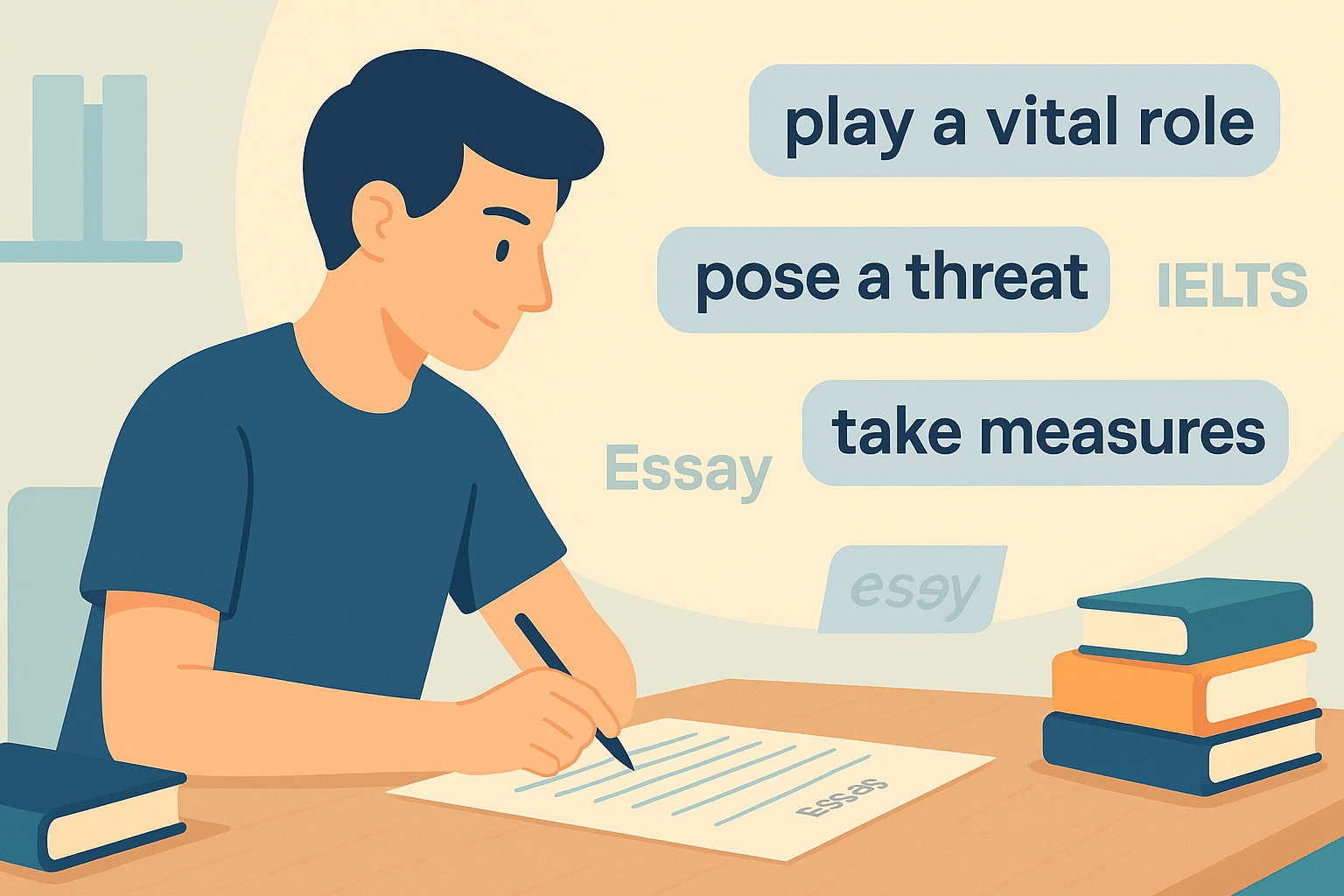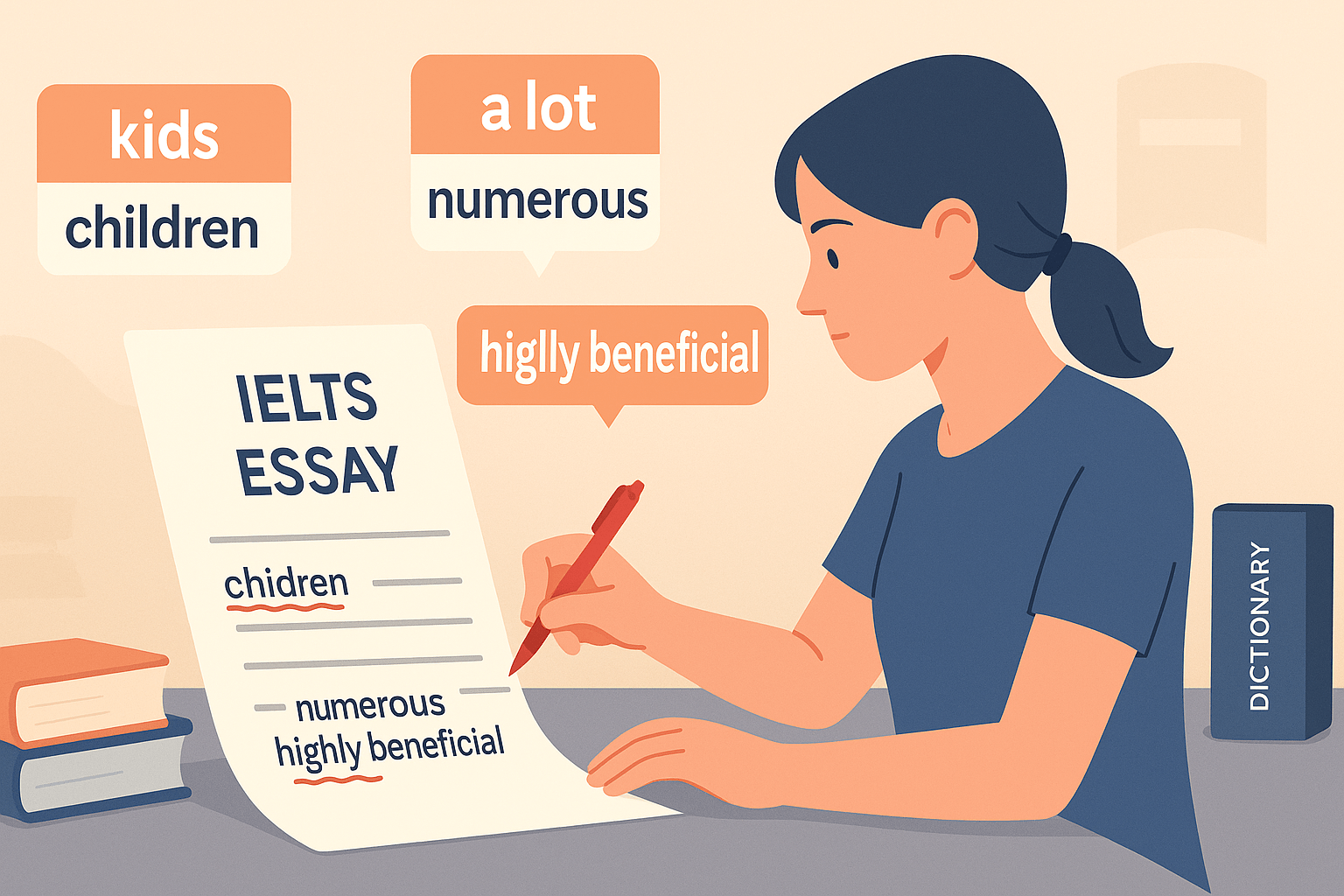When I teach IELTS students around the world, I always emphasize one secret to achieving Band 7–9 in Writing Task 2: cohesion.
You can have brilliant ideas, but if your essay feels disconnected, examiners will lower your score. That’s why linking words and connectors—also called cohesive devices—are so important.
In this guide, I’ll teach you:
- ✅ Essential IELTS Writing Task 2 linking words for all essay types
- ✅ How to use transition words for contrast, examples, and conclusions
- ✅ My teacher tips to avoid overusing connectors
By the end, your essays will flow smoothly and logically, just like a Band 9 answer.
Internal Resource: If you haven’t read my IELTS Writing Task 2 Vocabulary for Band 7–9 yet, start there to master the foundational vocabulary first.
Why Linking Words Matter in IELTS Writing Task 2
IELTS examiners use Cohesion and Coherence as one of the four scoring criteria, which makes up 25% of your writing score.
- Linking words connect ideas, examples, and arguments smoothly
- They make your essay easy to read and logically organized
- They signal the relationship between sentences and paragraphs
For more scoring details, visit:
Essential IELTS Writing Task 2 Linking Words
Here’s my teacher-approved list of linking words categorized by function, so you can use them naturally in your essays.
1. Linking Words for Addition (To Add Ideas)
Use these when adding supporting points:
- moreover
- furthermore
- in addition
- what is more
Example:
“Online learning is flexible; moreover, it reduces commuting costs for students.”
2. Linking Words for Contrast (To Show Differences)
Use these for opposite ideas or contrasting points:
- however
- on the other hand
- although / though
- whereas
- nevertheless
Example:
“Technology improves efficiency; however, it may also reduce face-to-face communication.”
3. Linking Words for Cause and Effect
Use these when explaining reasons or results:
- therefore
- as a result
- consequently
- due to / owing to
- because of
Example:
“Urban populations are increasing; consequently, housing prices are rising rapidly.”
4. Linking Words for Examples and Emphasis
Use these when illustrating your point:
- for example
- for instance
- namely
- such as
- in particular
Example:
“Many countries are investing in renewable energy, for example, solar and wind power.”
5. Linking Words for Comparison (To Show Similarities)
Use these for parallels or similarities:
- similarly
- likewise
- in the same way
Example:
“Mobile phones have transformed communication; similarly, video conferencing has changed work culture.”
6. Linking Words for Conclusions and Summaries
End your essay smoothly with these connectors:
- in conclusion
- to sum up
- overall
- taking everything into account
- all things considered
Example:
“In conclusion, strict traffic laws and improved public transport are essential to reduce urban congestion.”
Teacher Tips: How to Use Linking Words Correctly
I’ve seen many students misuse or overuse connectors, which lowers their score.
Here are my top tips:
1. Don’t Start Every Sentence with a Connector
❌ However, people like social media. Moreover, it is fun. Therefore, they use it.
✅ Although social media is entertaining, it can also affect mental health. Therefore, using it in moderation is advisable.
2. Keep Variety, but Stay Natural
- Use different types of linking words for introduction, contrast, and conclusion.
- Avoid forcing connectors where they don’t fit.
3. Combine with Topic Vocabulary for Band 9
Linking words guide the flow, but vocabulary expresses the idea.
- Example: “In conclusion, environmental policies are essential to prevent detrimental effects on nature.”
- Here, linking words + strong synonyms = higher Lexical Resource + Cohesion score.
Sample Paragraph Using Linking Words and Connectors
“Many people prefer online learning because it is flexible and convenient. For example, students can attend lectures from anywhere without commuting. However, one drawback is the lack of real-time interaction with teachers. Therefore, a hybrid model combining online and offline learning might be the most effective solution.”
Notice how:
- Each idea flows naturally
- Linking words connect ideas without being overused
Quick Practice Exercise
Rewrite this short paragraph using at least three linking words:
“Cars create pollution. People still use them every day. Public transport is cheaper.”
Suggested Answer:
“Cars create pollution; however, people still use them daily. Therefore, investing in public transport is essential because it is not only cheaper but also eco-friendly.”
FAQ Section
Q1: What are IELTS Writing Task 2 linking words?
They are transition words and connectors that link ideas, improve essay flow, and boost your Cohesion and Coherence score.
Q2: How many linking words should I use in my essay?
Use them naturally. Usually, 5–10 well-placed connectors are enough for a Band 7–9 essay.
Q3: Can I start every sentence with a linking word?
No. Overuse can make writing unnatural and lower your score. Combine variety + accuracy for the best results.
Conclusion
Mastering IELTS Writing Task 2 linking words and connectors is a powerful step toward Band 7–9.
When you:
- Use contrast, cause-effect, and example connectors
- Combine them with strong vocabulary and clear ideas
- Avoid overusing or misusing linking words
… your essay becomes cohesive, logical, and examiner-friendly.
If you’re serious about boosting your Writing Task 2 score, start combining these linking words with the vocabulary from our IELTS Writing Task 2 Vocabulary for Band 7–9 guide today.





One Response
What’s up, I read your new stuff on a regular basis.
Your humoristic style is awesome, keep up the good work!